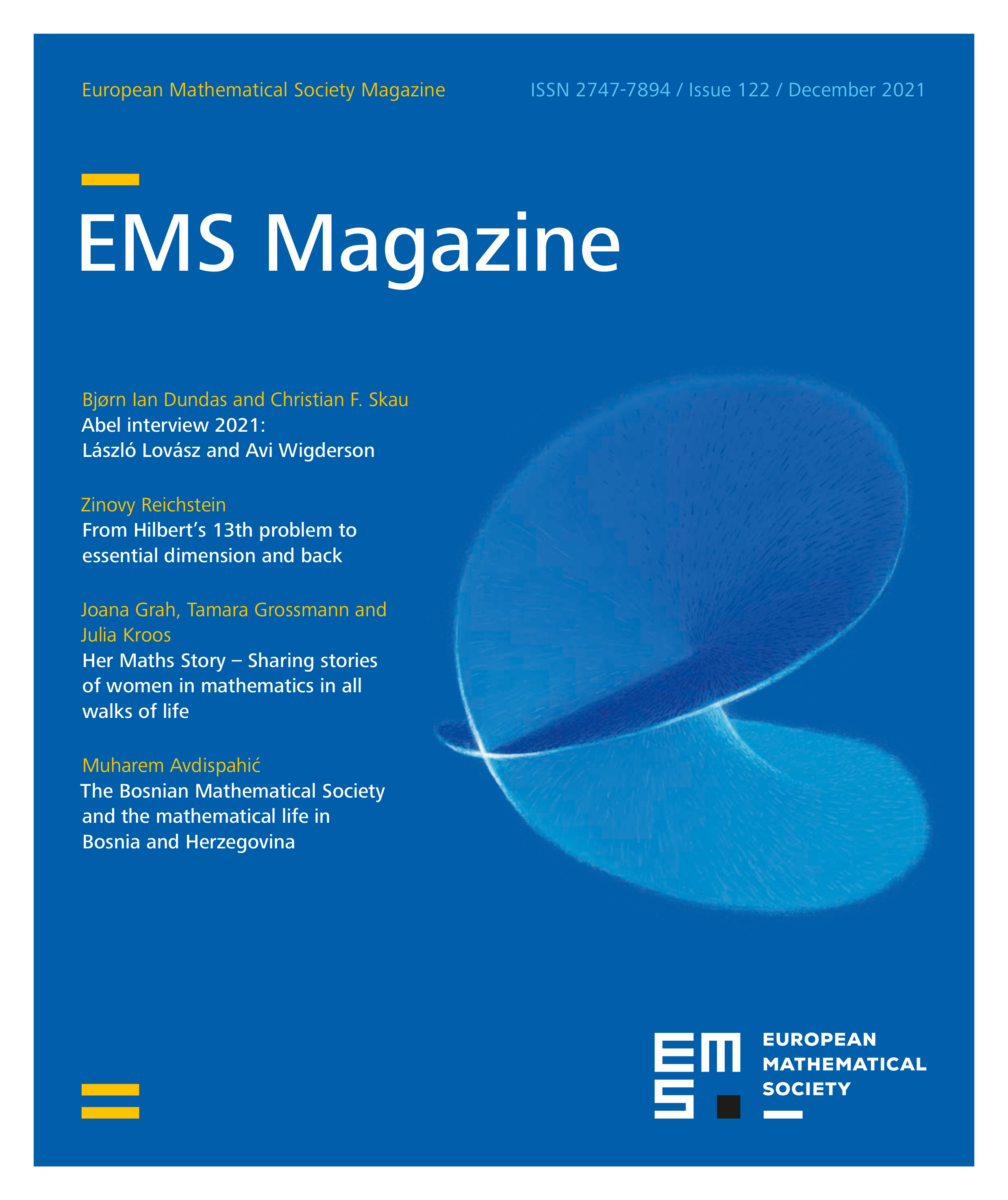Historically, representation of women in STEM and particularly mathematics has been quite poor. While women were barred from studying in most European countries as recently as 100 years ago, the continuing underrepresentation of women in mathematics in the past decades can also be partly attributed to a scarcity of role models. The aim of Her Maths Story is to bring the existing role models into focus and present them as a collection of different careers and life paths – because they do exist, these women in mathematics.
Being a young woman entering the world of academia or industry can be quite intimidating in the beginning, and all the more so if there is no other woman in the same professional circle to connect with, talk to or look up to. But even well-established women mathematicians in academia and industry share common challenges, be it the subtleties of regularly not being listened to, not being taken seriously, or juggling societal expectations with a successful career.
An increasing number of organisations, universities and companies are beginning to recognise that the number of women in their institutions is low, although there is a proven benefit in having gender-balanced teams1A. W. Woolley, C. F. Chabris, A. Pentland, N. Hashmi and T. W. Malone, Evidence for a collective intelligence factor in the performance of human groups. Science330, 686–688 (2010). Awareness of the importance of equality and diversity is increasing, and the path to change in the mathematical workforce can in fact benefit from the experience of women. Therefore, the motivation for Her Maths Story is twofold: Giving women the space to share their experiences and learn from others, and offering insights into the life of a woman mathematician to the wider public.
The platform Her Maths Story includes both a website and various social media channels. Each week sees the publication of a blog entry or the personal story of a mathematician, both made accessible to a general audience. Stories consist of a text that can be read in 5–10 minutes describing the individual journey of a mathematician, and include a short CV with a photo. Blog entries, on the other hand, are longer texts that offer the opportunity to go into more detail on specific topics. We promote these stories and articles on our social media channels on Facebook, Instagram, LinkedIn and Twitter to reach as wide and as diverse a target group as possible.
A screenshot of the stories section of Her Maths Story.
🅭🅯 CC BY 4.0We have published 33 stories since the beginning of this year. Of these, more than half are about women from Europe. The stories are as multifaceted as the career paths themselves. We have contributors from academia and industry, from undergraduates to PhD students to professors, from biostatisticians at AstraZeneca to data scientists at the energy company Enel to software developers in Airline IT. However, in our globalised world, cooperation with mathematicians from all countries is important, so we have made an effort not to focus solely on Europe, but to reach out to portray women from many different cultures and with highly varied life paths. For example, we featured the founder of the American organisation “Mathematically Gifted and Black”, who is a professor of mathematics, and an Argentinian professor of mathematics who is also a fashion consultant. These stories deal not only with the common passion for mathematics, but also with personal motivations and societal and social hurdles, as well as the various influences in the individual careers.
The platform thrives on each and everyone’s personal stories, experiences and advice. It is an ever-changing collection and there are still many more journeys to share and insights to gain.
The Her Maths Story team is always looking for new contributions, so if you want to share your journey or know someone with an inspiring, encouraging or unique maths story, contact them via hermathsstory@gmail.com.
- 1
A. W. Woolley, C. F. Chabris, A. Pentland, N. Hashmi and T. W. Malone, Evidence for a collective intelligence factor in the performance of human groups. Science330, 686–688 (2010)
Cite this article
Joana Grah, Tamara Grossmann, Julia Kroos, Her Maths Story – Sharing stories of women in mathematics in all walks of life. Eur. Math. Soc. Mag. 122 (2021), pp. 55–56
DOI 10.4171/MAG/53

